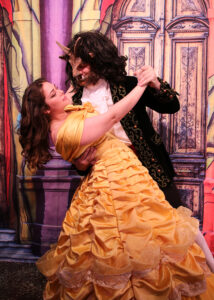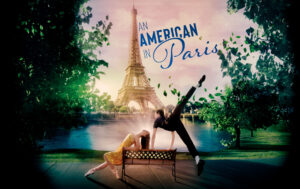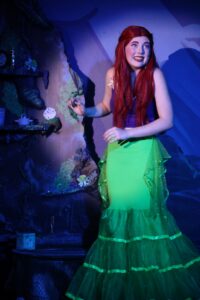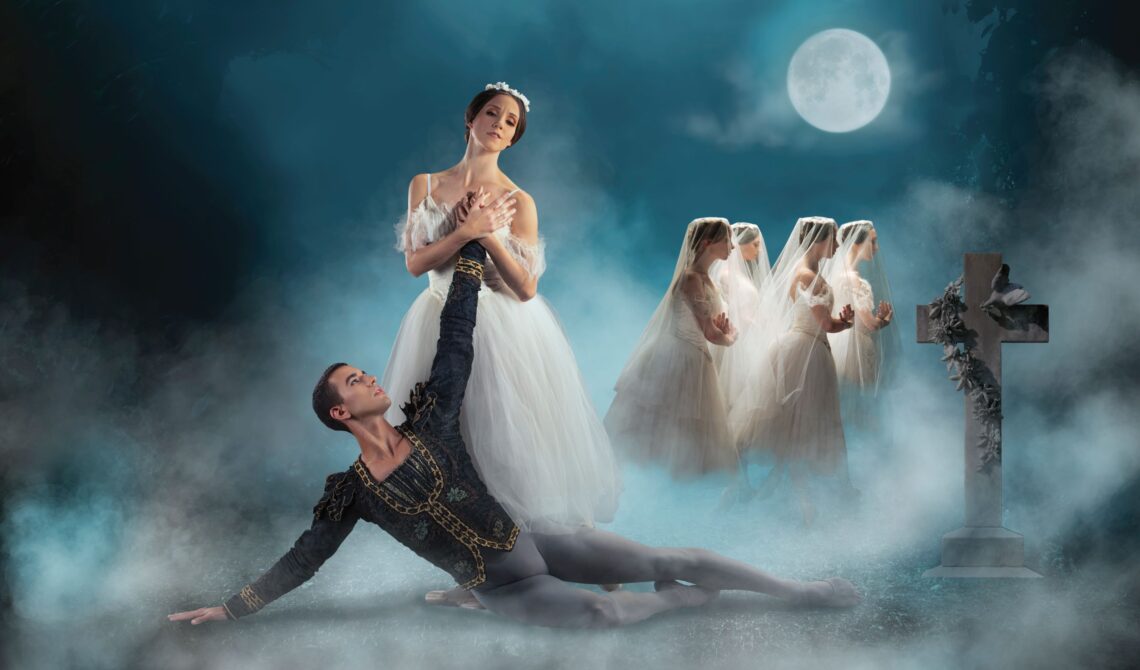Writer Joseph J. Airdo



We have all grown up with stories that completely transcend history. They are so ingrained within our youth, our personal experience and key moments over the course of our lives that they seem to have just always existed.
We logically know that this is not the case. Someone at some time not so long ago wrote each one of them. There exists a point in history when these timeless tales were not yet known much less deeply rooted in our consciousness.
But February is hardly a time for logic when so many of us give our brains a brief break and allow our hearts to lead us, embracing the unexplainable magic and romance of life.
“Beauty and the Beast” is one such story. Though it existed two-and-a-half centuries prior, Disney’s 1991 iteration — the first-ever animated feature to be nominated for Best Picture at the Academy Awards — solidified its significance and presence in our culture.
“It is every little girl’s dream to find the prince beneath the beast,” says Peter J. Hill, artistic and technical director of Fountain Hills Theater. “And it is every guy’s dream that, despite who he is, he might get the pretty girl.”
Hill notes that an over-dependence on such dreams is not necessarily a good thing and, when taken at face value, fairytales can lead to unhealthy thoughts and behaviors. Nonetheless, they encourage us to dream, to become better people and to acknowledge and appreciate moments of enigmatic enchantment in our lives.
“And, fortunately, [Belle] is very strong-willed in this show,” Hill adds. “[The Beast] sees the errors in some of the things that he does as well.”
Hill is directing Fountain Hills Theater’s production of “Beauty and the Beast” through Feb. 12, bringing the quintessential “tale as old as time” — and all of its music — to life for Arizona audiences.
“We are filling the stage,” Hill explains. “Because [Fountain Hills Theater] is such a small theater, it will look huge. There are a lot of gorgeous costumes that are being put together by [costume designer] Mickey Courtney and we have ordered some custom-made drops for the set that are just beautiful.”
Moreover, he believes that “Beauty and the Beast” is the perfect show for date night.
“It is going to make you feel romantic,” Hill says. “There is no question about that. The thing is just built that way. Disney, in particular, really knows how to tug at your heartstrings. They know how to make you feel good and how to make you feel the romance. If you roll in here around Valentine’s Day, it is going to be terrific.”



‘An American in Paris’
Larry Raben fondly recalls the very first time he ever watched the 1951 musical comedy film “An American in Paris.”
“It was a rainy Saturday afternoon,” Raben says. “It was a very cold and nasty day. This thing came on called ‘An American in Paris.’ Gene Kelly was so dynamic and Leslie Caron was so beautiful. I just got swept away in this beautiful, romantic story about a city that I had never been to but had always read about.”
Raben immediately fell in love with the film, which he strongly believes is one of the best movie musicals of all time. It was therefore a dream come true when Phoenix Theatre Company called upon him to direct their production of “An American in Paris” — which was initially inspired by an orchestral piece that George Gershwin composed in 1928.
“When artistic director Michael Barnard asked me if I had any interest in directing ‘An American in Paris,’ I nearly jumped through the phone,” Raben explains. “I am a huge Gershwin fan. I saw the show on Broadway and it was lush and epic and just gorgeous. I am so excited to do this show and to put our own spin on it for Phoenix audiences.”
On stage through March 12, “An American in Paris” deviates slightly from the film version in that it begins a few years earlier in 1945, during the liberation of Paris from the Nazis.
“This makes it a much more epic and richer story in that there is literally a depression over the city of Paris,” the director says. “People are carrying the scars of war. [The main character] has just come back from the front lines and, instead of taking his transport plane home to the United States where everything is safe, he chooses to stay in Paris.
“He is a struggling artist and encounters this beautiful young French girl. He watches people come out of this very bad dream and is growing both as a person and as an artist while falling in love all at the same time. And we watch Paris literally come back to life.”
Raben describes the story as a tortured romance, which he believes is the most romantic kind of all — as long as things eventually work out in the end.
“It is a love triangle about three different men who are all in love with the same woman,” he says. “Then there are other women who are in love with those men. There are a lot of missed opportunities, a lot of longing, a lot of hope and a lot of beauty. And I think the fact that ballet is utilized so heavily in the storytelling of this piece makes it a classic fairytale.”
The director adds that he and scenic designer Douglas Clarke collaborated to ensure that Arizona audiences feel the full breadth of La Ville-Lumière in the production.
“Paris is very much front and center as a character in this piece,” Raben explains. “We are looking up through the architecture of the Eiffel Tower for the entire evening. The whole thing feels like it wants to waltz; like it wants to dance.”



‘Giselle’
Sometimes a romance ends in tragedy but still possesses so much passion that it leaves you feeling hopeful and as though true love really can conquer all. “Giselle” is a ghost-filled, haunting ballet — first performed in Paris on June 28, 1841 — that tells the tragic tale of a young woman who dies of a broken heart. Maiden spirits then take revenge on the young nobleman who betrayed her.
An achingly beautiful and enrapturing work of art that draws audiences in with themes of enduring love, tragedy and romance, “Giselle” will come to life Feb. 9–12 at The Madison Center for the Arts courtesy of Ballet Arizona.
Dancer Tiffany Chatfield says that “Giselle’s” story of heartbreak is one to which many people can relate — albeit a bit amplified.
“It is one of my favorite ballets because Giselle is not a one-dimensional character,” Chatfield says. “She is very human in the first act. Timid and naïve, but bright-eyed and loving as a young woman is. The ‘Mad Scene’ at the end of Act I is where we see the catalyst that changes her from an innocent girl with rose-colored glasses into her Act II persona as a Wili, where she is somewhat a shell of the person she used to be.
“In this ghost-like state, she is amongst a corps de ballet of women who suffered a similar fate. It is a display that parallels a common real-life experience: those who have been hurt in a similar way, banding together to protect each other. It is powerful.”
Chatfield adds that “Giselle” is an especially wonderful show for couples, who are guaranteed to love and feel moved by its beauty and grace.
“But I think that this might be the ultimate ballet to see with your friends — especially if you can relate to being cheated on,” she adds. “Valentine’s Day is either a day of fuzzy lovey-dovey things, or it can be a stark contrast. ‘Giselle’ is an emotionally-intense ballet, so bring some tissues — and maybe [have] some Ben and Jerry’s [ice cream waiting for you when you get home.]”



‘Alice in Wonderland’
Of course, not all fairytales feature romance. Some are straight-up fantasy — such as “Alice in Wonderland,” in which a young girl falls down a rabbit hole into a world of imagination. Roughly one century before the story was adapted as an animated feature by Disney, it was published as an original novel by author Lewis Carroll.
Although Joshua Hengst admits that the Disney version was one of his favorite movies when he was a kid, he also recalls reading Carroll’s novel as part of his English curriculum in elementary school.
“I remember being fascinated by all of the characters,” says Hengst, who will be co-directing Starlight Community Theater’s production of “Alice in Wonderland” Feb. 17–26 with Christina Clodt. “When we saw the opportunity to direct this show, we got very excited about being able to bring something so amazing, childlike, zany and interesting to the stage.”
Clodt adds that those who are only familiar with the Disney version — which she loves — will be pleasantly surprised by Starlight Community Theater’s production, which she says is more faithful to Carroll’s book and therefore sketches many of the story’s most beloved characters with more depth and dimension.
“For example, Tweedledee and Tweedledum are very cartoonish in the movie whereas they are more of a comedic duo in the book,” she explains. “So our actors have a little more flexibility and creativity to make these characters their own.”
Hengst says that another beloved character whose representation deviates from the one with which most are familiar is The Queen of Hearts.
“In our show, The Queen of Hearts sings a flamenco-tango song about playing croquet,” he explains. “I would have trouble seeing the Disney cartoon version of the character doing that. She was just very angry all of the time whereas this version of her has got different levels to her [personality]. There are times when she is angry, but there are also times when she is very royal and fancy.”
Hengst adds that other characters who were relegated to very small roles in Disney’s animated adaptation were actually much more significant in Carroll’s book and receive more of a star treatment in Starlight Community Theater’s musical.
“For instance, The Mock Turtle is not even in the Disney movie,” says Hengst, noting that the differences led to some amusing confusion among actors during the audition process.
This version of “Alice in Wonderland” also draws some similarities to another timeless tale — “The Wizard of Oz.”
“In this show, the actress who plays Alice’s mother also plays The Queen of Hearts,” Clodt says. “Her mother scolds her and is a little hard on her at the beginning of the show and is later embodied by The Queen of Hearts. She is a characterization of the anger or annoyance that Alice has over being scolded. Wonderland is how this child processes the adult world and the things in her life that are not so great.”
‘The Sound of Music’
Some stories have significance not only in general culture but also in our personal lives. “The Sound of Music” may very well have propelled Cadie J. Bryan to her career in theater.
“My very first memory of singing in public is at a Christmas revue,” Cadie says. “I think I was in kindergarten or first grade. We each had different numbers and I was put in ‘My Favorite Things’ [from ‘The Sound of Music’]. So I have known that song since I was 5 years old — probably even before then because my mom would sing it to me. I then, of course, saw the movie and fell in love with it, as we all do.”
Before the 1965 film adaptation, “The Sound of Music” was a Rodgers and Hammerstein musical, which itself was based on the 1949 memoir of Maria von Trapp. Set in Austria on the eve of the Anschluss in 1938, it tells the story of Maria, who takes a job as governess to a large family and falls in love with the children — and, eventually, their widowed father, Captain von Trapp.
Cadie is set to portray Maria in Arizona Opera’s production of “The Sound of Music” March 3–5 at Symphony Hall in Phoenix and March 11 and 12 at The Linda Ronstadt Music Hal in Tucson.
“It does not feel like I am playing Maria,” Cadie says. “It feels like I am playing ‘The Sound of Music.’ It feels like this huge entity. It is so important to so many people and feels so much larger than me.”
Having already made a profound impact on her, “The Sound of Music” will soon have yet another significance in Cadie’s life — as the first production in which she gets to play opposite her husband Jonathan in leading roles.
Jonathan says that, like Cadie, the show and, in particular, its music played big parts in his musical education, and the movie is still required viewing for his family during the holidays.
“It just seems like this big, iconic piece of entertainment history that I never really even considered that I would have a chance to be a part of,” he adds. “And I cannot believe that I get to do it with my wife. We have never professionally had the opportunity to perform together in roles like this. We have done concerts together and things like that, but we have never gotten to play in love on stage before.”
Speaking of which, Jonathan — who is visibly still as smitten with his wife as the day she transferred into his voice class at Louisiana State University — believes that playing in love will come easy.
“What I am nervous about is the first half of the show, when Captain von Trapp is engaged to someone else and is aloof and even kind of mean to Maria,” Jonathan explains. “He has not had that moment of connection and attraction yet. I have got to find a way to avoid looking doe-eyed at Cadie all the time.”
Jonathan adds that audiences should expect to see from Arizona Opera’s production of “The Sound of Music” the timeless tale with which they are familiar in an entirely different — and perhaps even more resonant — way.
“In this scenario, an audience member will have the opportunity for the music to wash over and envelop them,” he explains. “They will feel the vibrations of the music being made against their own selves.”
Those vibrations are essentially a form of communication that only theater can provide.
“We get a chance to all vibrate together — 3,000 people sitting there, all feeling the same thing for those brief, divine moments,” Jonathan concludes. “I think that is why our craft has clung to these stories of big love and passion and why they have become the iconography of our industry.”
‘Beauty and the Beast’
Through Feb. 12 // Fountain Hills Theater // 11445 N. Saguaro Blvd., Fountain Hills // fhtaz.org
‘An American in Paris’
Through March 12 // The Phoenix Theatre Company // 1825 N. Central Ave., Phoenix // phoenixtheatre.com
‘Giselle’
Feb. 9–12 // The Madison Center for the Arts // 5601 N. 16th St., Phoenix // balletaz.org
‘Alice in Wonderland’
Feb. 17–26 // Starlight Community Theater // 1611 W. Whispering Wind Drive, Suite 9, Phoenix // starlightcommunitytheater.com
‘The Sound of Music’
March 3–5 // Symphony Hall // 75 N. Second St., Phoenix // azopera.org







Comments by Admin